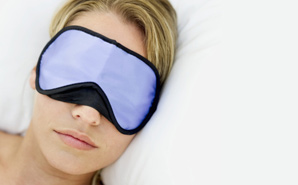Ah, the beauty of warm weather and extended daylight hours bode nicely for the avid runner looking to go for a quick jaunt through the city by foot training for the next big race. A mile in: Wow, it’s hot out here. Two miles in: My once steady cadence of breathing regulated by strides is overcome by the huffing and puffing of my erratic breathing in this dense, humid air. Four miles in: Â Vision is blurred by the excessive amount of sweat dripping into my eyes. Six miles in: I’m scampering to find any trace of shade along the route, I decided that like a vampire, I will avoid sunlight at all cost. Seven miles in: Is that a water fountain? Nope, just a mirage that my disoriented and dehydrated mind fabricated.
Does this experience sound familiar to anyone? Sure, the warm summertime weather is beautiful, sunny, and darn near perfect. To be on the beach with an unlimited water supply and limited clothing that is. Sticking to a workout regimen that involves the outdoors can be both tricky and sometimes dangerous in the summer. Unlike winter, there is no ice to worry about slipping on but heat exhaustion is a beast of its own. Follow these tips to stay hydrated, active, and safe in the summertime heat when you hit a trail near you.
Attire
-Lightweight technical t-shirts are the best for running in the heat. The material, unlike cotton, wicks the moisture off your skin so you aren’t weighted down by a soggy, sweat-filled cotton tank top.
-The same material rules apply for socks- invest in some synthetic fiber running socks. These will help to prevent blisters and athlete’s foot that may result from your average cotton socks combined with long runs in the heat.
-Remember to wear light colors when running in the sun because dark colors absorb more UV rays and emphasize the heat.
-Sure, some guys like to run in hats to catch their head sweat. The reality is that you lose most of your body heat through your head so by wearing a hate when running you are contraindicating the body’s natural cooling mechanism. Losing the hat will help with losing the heat.
The run itself
-In the height of summertime, be sure to plan runs for early in the morning or later in the evening when the sun is not at its peak. The temperature difference can be drastic when the sun is not out versus in the afternoon hours.
-Also, if you must run when the sun is high, choose routes that have shade available so you are not in direct sunlight the entirety of the run.
-With drastic temperature changes coming out of spring and leading into summer, allow your body some time to adapt to the warmer weather by dropping distance down for a week or two. Your performance will be enhanced if you allow your body to adjust to running in 90 degree temperatures.
-Lastly, if you belong to a gym, try treadmill running. The temperature controlled environment is refreshing for a long workout.
Hydration vs dehydration
-One of the biggest issues of summertime running is dehydration because of the amount of body fluid lost from sweating. Unlike a winter run where I return dry to the bone even beneath three layers of clothing, a summertime run finds me looking like I just stepped out of the shower. A shower of sweat that is. DRINK WATER. Water is the key for fluid replacement post runs but excessive sweating can deplete the body of important electrolytes as well. After long runs, sports drinks such as Gatorade are recommended to replenish the electrolyte supply.
-It is recommended that you drink water 30-45 minutes prior to beginning a workout session and then continuing to drink 6-8 oz every twenty minutes that the workout persists. Obviously this becomes difficult during a long run so finding routes that may have strategic water fountains is a good idea, and the water bottle belts are efficient as well.
-A good experiment to see exactly how much water weight you lose on a run involves weighing yourself naked before and after a run. Every two pounds of weight lost is equivalent to a quart of fluid that you should be drinking to replace the loss.
Running outside can be a very enjoyable activity and is obviously a great way to keep in shape. But heat exhaustion should be taken very seriously and can sneak up on your without much warning if you are not taking the right precautions. Some warning signs of heat exhaustion include nausea, headache that starts during the run, confusion or disorientation, loss of muscle control, clammy and cool skin, and cramps. If you should find yourself exhibiting any of these warning signs, stop running immediately and find the nearest place to cool off and get a drink.
Enjoy the run!

















